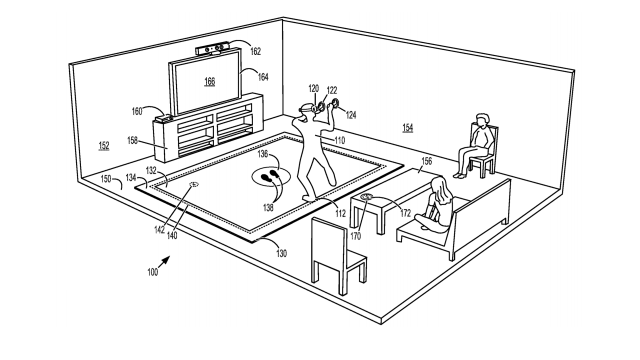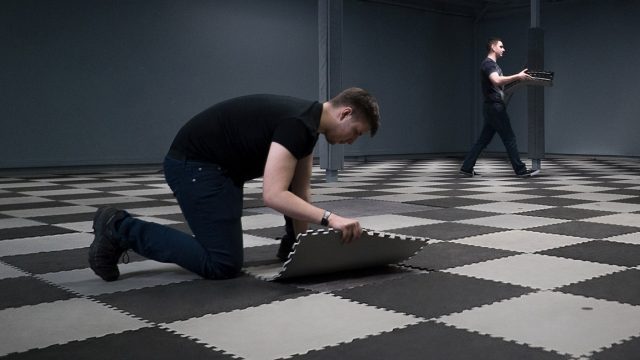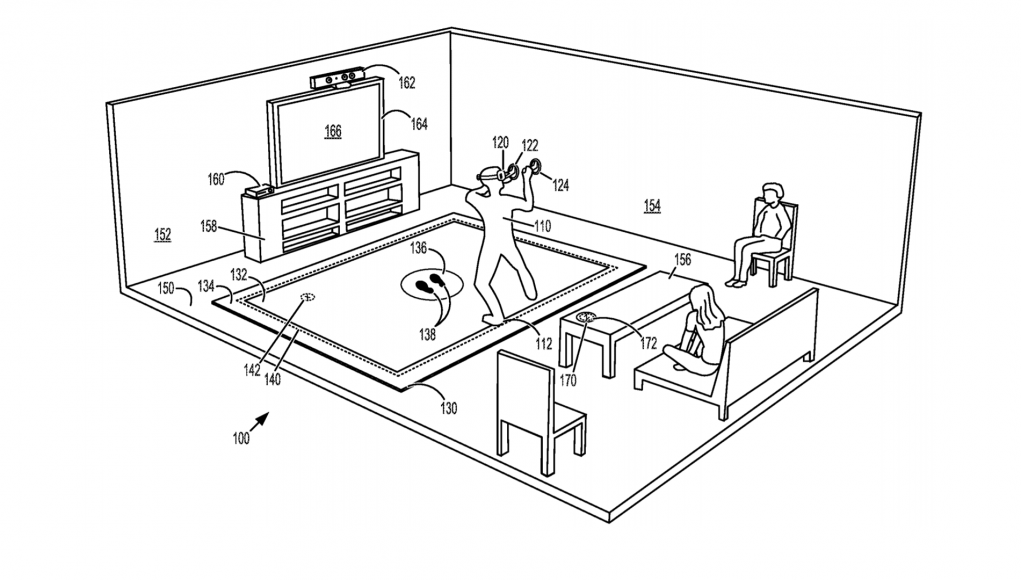A Microsoft patent application for a ‘virtual reality floor mat’ describes a special mat which defines a virtual playspace and can be used for tracking.
Spotted by Twitter user WalkingCat, a Microsoft patent application published last week describes a “virtual reality floor mat activity region,” a special mat that would both define the virtual playspace and be used for tracking.
The artwork in the patent clearly suggests a living room environment where the VR experience is powered by a game console. When it comes to VR on Xbox, Microsoft has had a confused relationship; the company had announced way back in 2016 that VR support was coming to Xbox One X but then suddenly backpedaled on that decision. It has remained mum on the subject ever since, even in the face of the next-gen Xbox ‘Project Scarlett’ which was revealed earlier this year.
Microsoft’s virtual reality mat patent application is a curious one. With inside-out tracking increasingly becoming the norm on VR headsets (including Microsofts own Windows VR headsets which were among the first to market with the tech), it’s not immediately clear why a special mat would be necessary, but the patent application reveals some interesting possibilities.

First, the application describes that the mat would have active or passive markers on it which would make its location known to headsets. While inside-out tracked headsets need to have their playspace boundary defined, having a mat in your home would be a ‘set it and forget it’ approach to defining the playspace. Not only would this eliminate occasions where a system without such a mat might forget the boundary and require the user to reconfigure it, the mat-defined boundary would be accessible to any headset without per-device configuration, similar to the way that Valve’s SteamVR Tracking system can be used by any device that comes into the area without any pairing or configuration with the tracking system.
With the mat you could even drop inside-out tracking altogether; the mat could function as an outside-in tracking system (where the headset looks for only the markers on the mat and nothing else). This would reduce the compute requirements compared to inside-out tracking, which in turn could reduce the size and cost of a compatible headset and other devices. For instance, you could create a much less expensive controller which is tracked with the mat markers rather than its own on-board compute.
The mat would also facilitate a static and shared coordinate system which would be useful for multi-user experiences where two or more players are using a headset at the same time in the same space. This could also extend to AR devices like HoloLens, and even the tracking of non-immersive devices like smartphones or tablets, making possible various hybrid experiences.
And finally, there’s the human affordance factor. A mat on the floor makes clear to everyone else in the room where they shouldn’t stand if they don’t want to risk a haymaker to the noggin when someone is playing a VR boxing game or similar.
The patent application also considers a version of the mat which would be based on tiles which could be configured into novel shapes and expanded as needed by users.

Much of the functionality described in the patent sounds very similar to the approach of Antilatency which has developed a tile-based outside-in tracking system with minimal compute requirements which can functional well with just a single camera on the headset. The system is inherently expandable, doesn’t require per-device configuration, supports arbitrary numbers of users, and can be configured into novel shapes. The company is already selling dev kits for the system which is aimed at enterprise and commercial use-cases.

Microsoft’s virtual reality mat patent application is attributed to inventors Julia Schwarz, Principal Software Engineer on HoloLens, and Jason Michael Ray, Software Engineer on HoloLens. The application was filed in April 2018 and published on October 3rd, 2019, though it has not yet been granted.
As ever, it’s worth pointing out that large companies file hundreds if not thousands of patents each year as a strategic exercise; there’s no telling whether or not something described in a patent will manifest in a product. Without additional evidence, patents are best interpreted as a glimpse into what a company is thinking rather than what it is doing.







